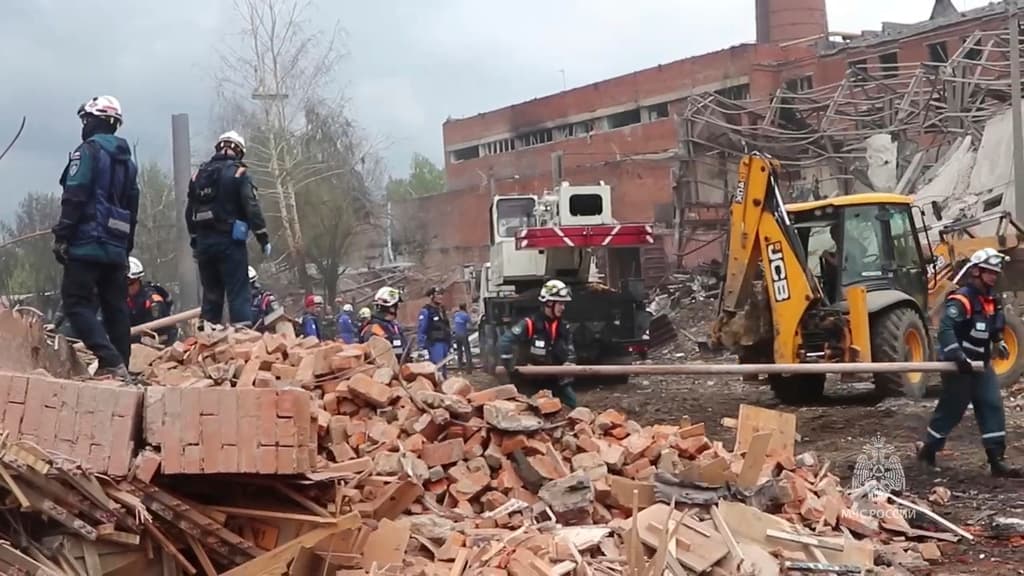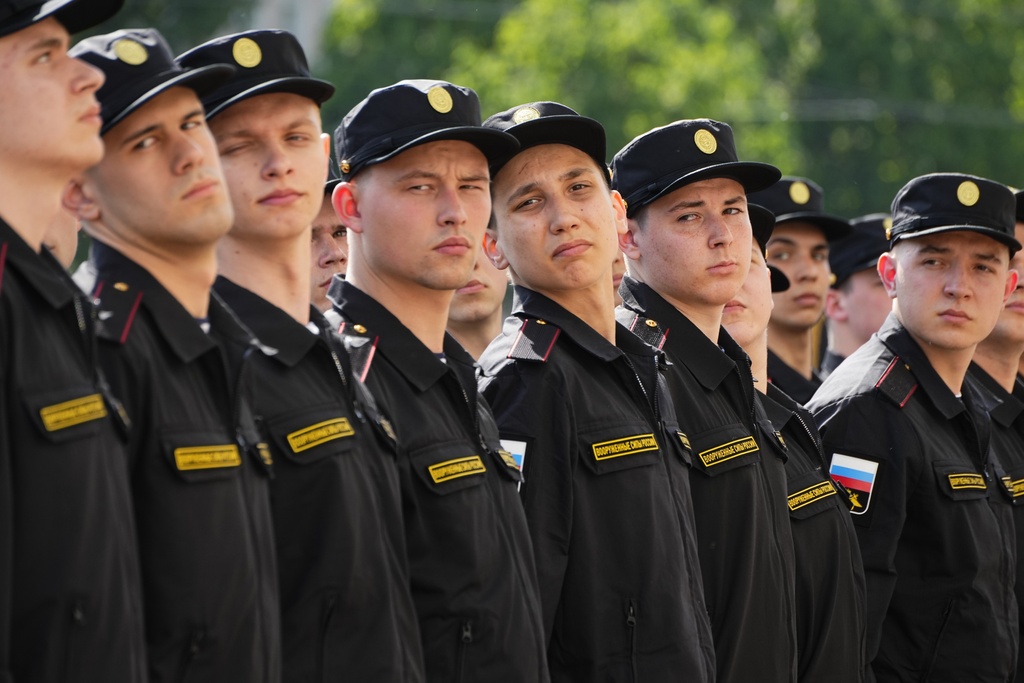Exclusive: Russia Has Its Own Resistance
It constitutes the tip of broader, non-violent resistance often ignored by Western press.

In the week after Russia’s parliament voted to raise the military draft age to 30 from 27, Molotov cocktails were thrown at 28 draft boards across Russia. During the five peak years of the Vietnam War, by contrast, Americans attacked 51 draft boards.
In today’s Russia, this anarchic response failed to stop President Putin from signing the bill to raise the draft age. Effective in January, the new age eligibility for men comes after new laws that hike penalties for draft evasion, bar draftees from leaving the country, and institute a system of delivering draft notices by email, instead of by hand.
As Russia’s war in Ukraine stalls, Russia’s defense minister, Sergey Shoigu, has set a goal of expanding Russia’s military by 30 percent to 1.5 million. This would help fill ranks depleted by an estimated one quarter million Russian soldiers killed or wounded in Ukraine over the last 18 months.
Yet the wave of Molotov cocktails may give insight into why Mr. Putin avoids repeating his million-man “national mobilization” of last fall. The Russian Army got its million men. Another million, though, fled Russia for neighboring countries.
The war has been so disruptive to Russia’s population that the workforce shed 1.3 million young workers last year. According to a survey by Russia’s Central Bank, Russia faces its biggest labor shortage in 25 years.

A record 42 percent of Russian industrial companies faced a worker shortage in July, a poll by the Yegor Gaidar Institute for Economic Policy found. Even the nation’s police force shed 5,000 employees over the last month, Russia’s interior minister, Vladimir Kolokoltsev, complained Thursday.
Current Kremlinology focuses on the jockeying of factions and elites in Moscow and inside the Kremlin. The agency of the Russian people barely figures in an essay by a Carnegie fellow, Tatiana Stanovaya, “Putin’s Age of Chaos: The Dangers of Russian Disorder,” in the current issue of Foreign Affairs.
Another Carnegie fellow, Andrei Kolesnikov, in his new essay: “Wait and See: How Ordinary Russians Are Adapting to the New Reality,” sets a similar tone. “During the Nazi occupation of Paris, most of the city’s residents neither supported nor opposed the Germans,” Mr. Kolesnikov wrote last week. “They were attentistes: waiting it out.”
Yet, as in wartime France, Russia today has its own resisters. For Russian speakers, alternate news feeds are just a few computer key clicks away. Rospartizan, a Telegram channel with 29,000 followers, chronicles anti-military sabotage across Russia — largely train derailments and fire bombings.
February Morning is a YouTube news channel and talk show that draws thousands of views daily. Both are organized by friends of mine in Kyiv. Rospartizan was founded by the only member of the Russian Duma to vote against Russia’s 2014 annexation of Crimea, Ilya Ponomarev. February Morning is hosted by Peter Zalmayev, a journalist originally from Ukraine’s Donetsk.
In Russia, the attacks are generally ignored by the press and broadcast news, or, if necessary, belittled by authorities. The draft board attacks, compiled by the exiled news site Meduza, were explained as carried out by grandmothers angry over financial schemes.
Rospartizan had a field day with the recent spate of Ukrainian drone attacks in Moscow, bombings that may have benefited from on-the-ground intelligence. After a drone hit a steel and glass high rise on July 31, the government stressed that other drones were shot down.
Rospartizan noted that the drone had flown through a forest of 16 towers to hit a highrise that contains three government ministries. The next day, a second drone hit the same tower.
Rospartizan has posted several seemingly exclusive videos from Wednesday’s massive explosion at the Zagorsk factory at Sergiyev Posad, 45 miles northeast of Moscow. Visible from miles around, this blast killed one worker, wounded 60, and left eight others missing.
The factory initially was identified as producing optical electronics for the military. Rospartizan reported: “The Zagorsk Optical and Mechanical Plant produces a lot of military products, including homing heads and aircraft sights. That is, the equipment that the Putin regime uses to kill civilians.”
Then, authorities said the big blast was due to fireworks stored at the factory complex. Coincidentally, also on Wednesday, Forbes posted an article by David Axe outlining Russia’s problems on producing military optics for its tanks.
Whether providing intelligence for Ukrainian drone attacks or carrying out their own actions, Russia’s violent resisters constitute the tip of broader, non-violent resistance, a movement often ignored by Western press.
Last year, more than 21,000 Russians were penalized for protesting Russia’s war in Ukraine, according to a new report by Amnesty International. Of this group, about 10 percent received prison terms.
“Repression in Russia runs deep where a complex and extensive range of tactics are increasingly being weaponized to silence anti-war dissent,” says Amnesty International’s Russia researcher, Oleg Kozlovsky.
“Peaceful protesters against the war in Ukraine and those who share critical information about the Russian armed forces face severe criminal, administrative and other sanctions,” Mr. Kozlovsky reports. “New, absurd laws that criminalize those who freely express their views have been adopted and immediately put to use.”
This week, Kholod news site concluded a nationwide crime survey with a report headlined “One Traitor a Day.” It said that during the first seven months of this year “more criminal cases of treason will be initiated in Russia than in the previous 20 years.”
In an echo of American attitudes during the Vietnam War, anti-war sentiment in Russia is highest among young people aged 18 to 24, according to a June poll by Russian Field, a nonpartisan Moscow-based research company.
The URA.Ru news site reported last week on an incident near Lake Baikal, where last week a group of youth attacked two veterans, calling them “murderers,” and tearing off their Ukraine campaign ribbons. In another case, a Central Asian migrant worker called a recent veteran an “aggressor,” and shoved him to the ground, killing him.
For most Russian young men who lost their chance to escape the country last year, the solution is not to throw Molotov cocktails, but to lay low.
One Russian software designer in his 30s has retreated to a tent deep in the forest. He works “remotely,” using a solar-powered internet connection tied to a fir tree. Blogging under the pseudonym “Adam Kalinin,” his “Rational Forester” Telegram channel has 14,736 subscribers. Every three weeks, his wife drops off food at a safe location.
Russians have a long tradition of resisting by running. In 1936, a member of the dissenting sect of Russian orthodoxy called Old Believers named Karp Lykov fled with his wife and two children after a Soviet patrol shot and killed his brother. They ended up in a remote forest in Southern Siberia, 160 miles from the nearest human settlement.
The family was only discovered when Soviet geologists flew over the area in a helicopter — in 1978. To this day, the surviving family member, a 79-year-old daughter named Agafia, refuses to move from her wilderness refuge.

